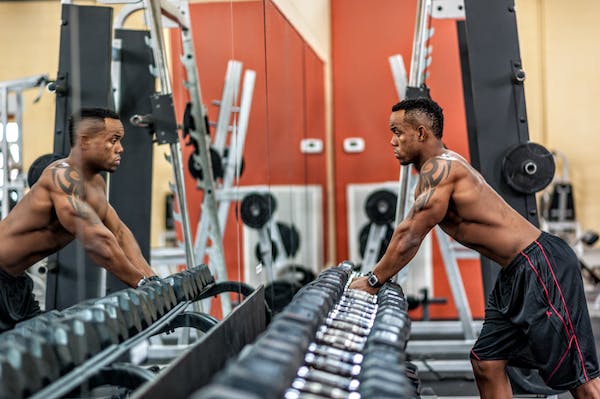
How to Master the Proper Form for Deadlifts
The deadlift is one of the most fundamental and rewarding strength exercises that targets multiple muscle groups, including the back, glutes, hamstrings, and core. However, due to its complexity and heavy loading potential, mastering the proper form for deadlifts is essential to prevent injuries and achieve optimal results. In this comprehensive guide, we will delve into each aspect of the deadlift technique, step by step, to ensure you lift safely and effectively, whether you're a beginner or an experienced lifter.
Understanding the Deadlift
1.1 What is a Deadlift?
The deadlift is a compound exercise that involves lifting a loaded barbell or object from the ground to a standing position. It simulates the motion of picking up heavy objects, making it a functional movement for everyday activities and sports.
1.2 Benefits of Deadlifts
- Strength Gains: Deadlifts recruit major muscle groups, leading to overall strength improvements.
- Posterior Chain Development: The exercise targets the muscles along the back of your body, including the erector spinae, glutes, and hamstrings.
- Core Stability: Deadlifts engage the core muscles to stabilize your spine during the movement.
- Increased Grip Strength: The exercise challenges your grip strength due to the heavy weight being held.
- Hormonal Response: Deadlifts stimulate the release of growth hormone and testosterone, promoting muscle growth and fat loss.
Preparing for Deadlifts
2.1 Warm-Up
A proper warm-up is crucial before attempting heavy deadlifts. Spend 10-15 minutes performing dynamic stretches, such as leg swings, hip circles, and arm circles, to increase blood flow to the muscles and improve joint mobility.
2.2 Gear and Equipment
Invest in appropriate gear to enhance your safety and performance during deadlifts:
- Weightlifting Belt: A weightlifting belt provides extra support to your core and lower back, especially when lifting heavy loads.
- Flat-soled Shoes: Wear flat-soled shoes, like weightlifting shoes or converse sneakers, to maintain a stable base and prevent wobbling during the lift.
- Chalk: Chalk can improve your grip on the barbell, especially if your hands tend to get sweaty.
Mastering Deadlift Technique
3.1 Foot Positioning and Grip
- Stand with your feet hip-width apart, toes pointing slightly outward.
- Position the barbell over the middle of your feet.
- Bend at your hips and knees to grip the barbell just outside your legs.
- Use either a double overhand grip (both palms facing you) or a mixed grip (one palm facing you and one palm facing away) for a secure hold.
3.2 Set Your Spine
- Maintain a neutral spine throughout the lift by keeping your head aligned with your spine and avoiding excessive arching or rounding.
- Engage your core muscles to stabilize your spine and protect your lower back.
3.3 The Deadlift Movement
- Take a deep breath and brace your core.
- Drive through your heels, engage your glutes, and lift the barbell off the ground.
- Keep the barbell close to your body as you lift, preventing it from drifting away from you.
- As the barbell passes your knees, thrust your hips forward and stand tall with your shoulders back.
3.4 Lowering the Barbell
- To lower the barbell, hinge at your hips and push your glutes back while keeping your spine neutral.
- Lower the barbell in a controlled manner, maintaining tension in your muscles throughout the descent.
- Avoid letting the barbell slam down, as this can lead to injuries and unnecessary strain on your body.
Common Deadlift Mistakes and How to Correct Them
4.1 Rounding Your Back
Rounding your back during the deadlift is a common mistake that can lead to spinal injuries. To correct this, focus on maintaining a neutral spine throughout the lift. Engage your core and visualize pushing your chest up and forward as you lift.
4.2 Lifting with Your Back
Deadlifts are a hip-dominant exercise, and relying too much on your back can lead to strain and discomfort. Instead, focus on initiating the lift with your hips and glutes. Imagine pushing the ground away with your heels as you stand tall.
4.3 Overextending at the Top
Locking out your hips and leaning back excessively at the top of the deadlift can stress your lower back. Instead, aim for a strong, neutral position with your shoulders back and hips fully extended. Avoid leaning back beyond this point.
Progression and Variations
5.1 Progressive Overload
To continue making progress with deadlifts, follow the principle of progressive overload. Gradually increase the weight lifted as your strength improves. However, always prioritize proper form over heavy weights.
5.2 Deadlift Variations
- Romanian Deadlifts (RDLs): Focus on the eccentric portion of the lift to target the hamstrings and glutes.
- Sumo Deadlifts: Widen your stance and take a wider grip, emphasizing the inner thighs and lower back.
- Trap Bar Deadlifts: Use a trap bar to lift the weight, which may feel more comfortable for some individuals and puts less stress on the lower back.
Common Questions and Answers
6.1 Should I Deadlift with a Rounded Back?
No, it's essential to maintain a neutral spine during deadlifts to protect your back from injury. Rounding your back places excessive stress on the spinal discs and can lead to serious issues.
6.2 How Often Should I Deadlift?
The frequency of deadlifts depends on your training goals and fitness level. Beginners should start with one to two deadlift sessions per week, while more experienced lifters can do it up to three times per week, with adequate rest days in between.
6.3 Can Deadlifts Help with Lower Back Pain?
When performed with proper form, deadlifts can actually help strengthen the lower back and reduce the risk of lower back pain. However, if you have pre-existing back issues, consult with a healthcare professional before incorporating deadlifts into your routine.
Takeaways
Mastering the proper form for deadlifts is essential for reaping the full benefits of this powerful compound exercise while minimizing the risk of injury. By understanding the principles of the deadlift, preparing your body with a warm-up and appropriate gear, and focusing on technique and common mistakes, you can confidently perform deadlifts with efficiency and safety. As you progress, explore variations and use the principle of progressive overload to continually challenge your body and achieve your fitness goals with this timeless and transformative exercise. Embrace the deadlift as a cornerstone of your strength training journey, and witness the remarkable improvements in your strength, muscular development, and overall fitness.









